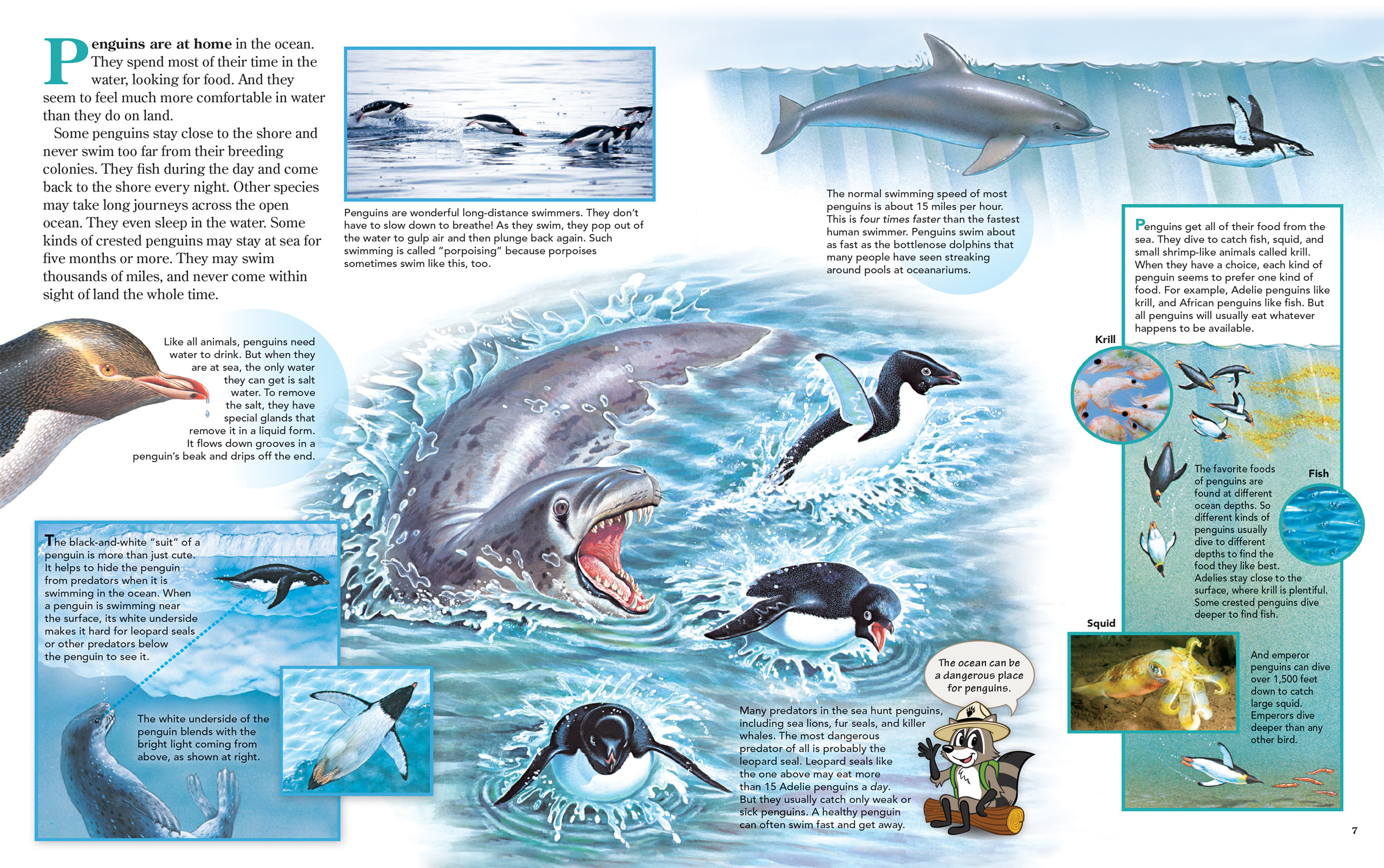
Penguins Are at Home in the Ocean
ByPenguins are at home in the ocean. They spend most of their time in the water, looking for food. And they seem to feel much more comfortable in water than they do on land.
Some penguins stay close to the shore and never swim too far from their breeding colonies. They fish during the day and come back to the shore every night. Other species may take long journeys across the open ocean. They even sleep in the water. Some kinds of crested penguins may stay at sea for five months or more. They may swim thousands of miles, and never come within sight of land the whole time.
Penguins are wonderful long-distance swimmers. They don’t have to slow down to breathe! As they swim, they pop out of the water to gulp air and then plunge back again. Such swimming is called “porpoising” because porpoises sometimes swim like this, too.
Like all animals, penguins need water to drink. But when they are at sea, the only water they can get is salt water. To remove the salt, they have special glands that remove it in a liquid form. It flows down grooves in a penguin’s beak and drips off the end.
The black-and-white “suit” of a penguin is more than just cute. It helps to hide the penguin from predators when it is swimming in the ocean. When a penguin is swimming near the surface, its white underside makes it hard for leopard seals or other predators below the penguin to see it.
The white underside of the penguin blends with the bright light coming from above, as shown at right.
The normal swimming speed of most penguins is about 15 miles per hour. This is four times faster than the fastest human swimmer. Penguins swim about as fast as the bottlenose dolphins that many people have seen streaking around pools at oceanariums.
Penguins get all of their food from the sea. They dive to catch fish, squid, and small shrimp-like animals called krill. When they have a choice, each kind of penguin seems to prefer one kind of food. For example, Adelie penguins like krill, and African penguins like fish. But all penguins will usually eat whatever happens to be available.
The favorite foods of penguins are found at different ocean depths. So different kinds of penguins usually dive to different depths to find the food they like best. Adelies stay close to the surface, where krill is plentiful. Some crested penguins dive deeper to find fish. And emperor penguins can dive over 1,500 feet down to catch large squid. Emperors dive deeper than any other bird.
The ocean can be a dangerous place for penguins. Many predators in the sea hunt penguins, including sea lions, fur seals, and killer whales. The most dangerous predator of all is probably the leopard seal. Leopard seals like the one above may eat more than 15 Adelie penguins a day. But they usually catch only weak or sick penguins. A healthy penguin can often swim fast and get away.

